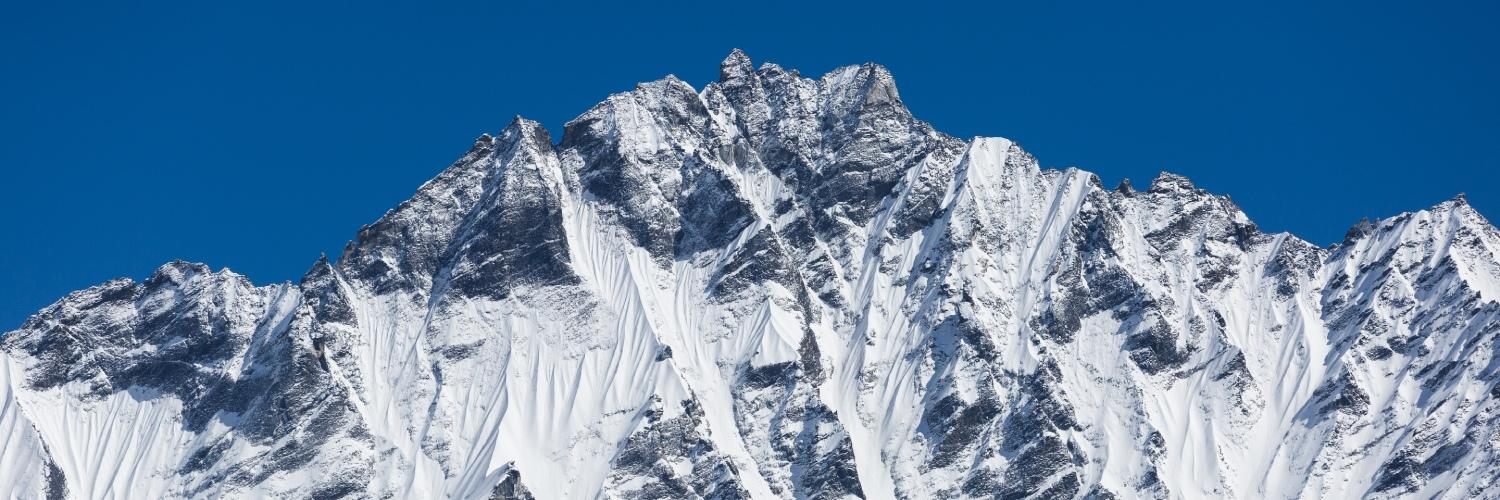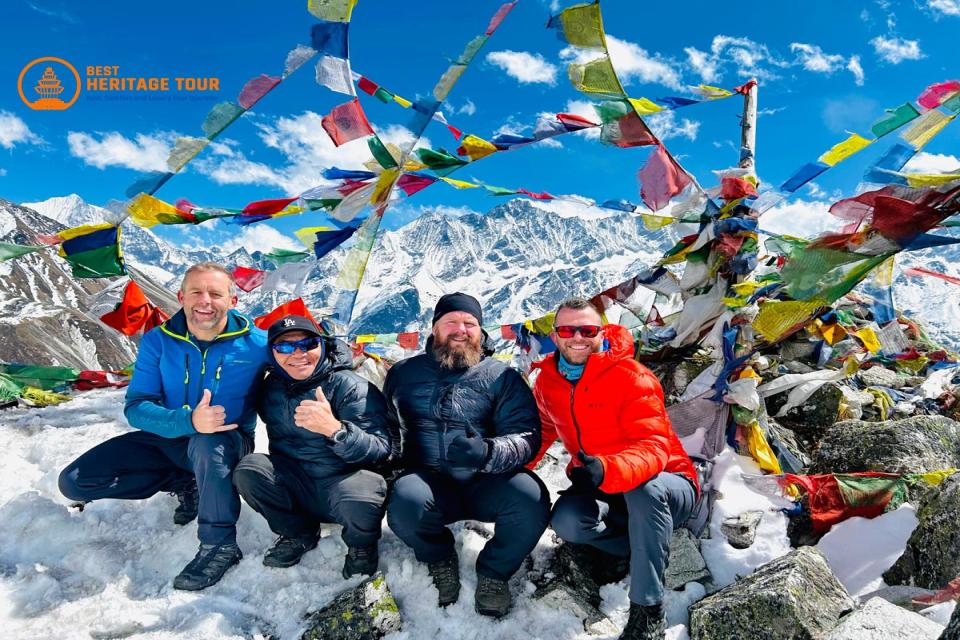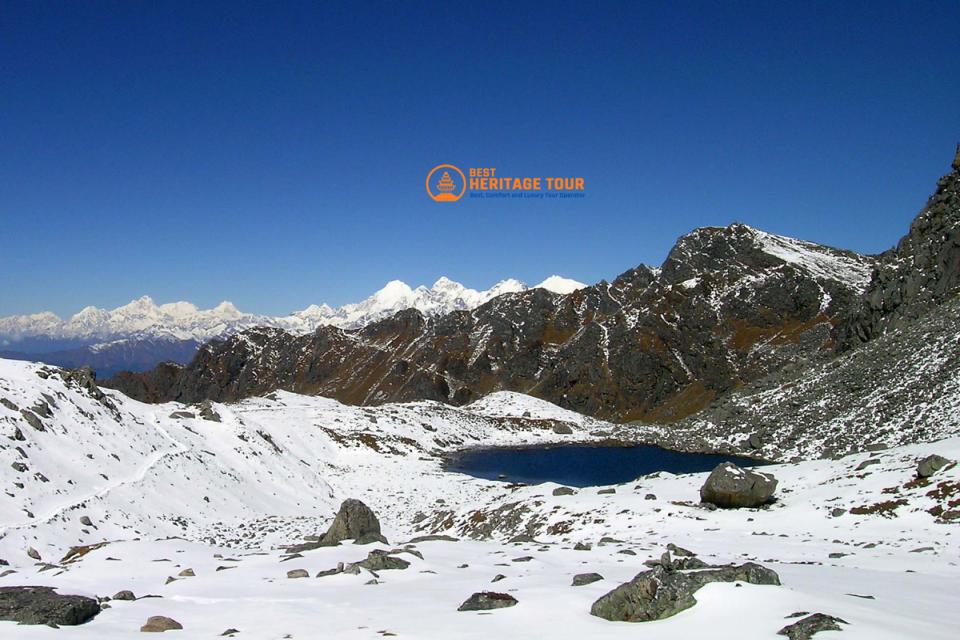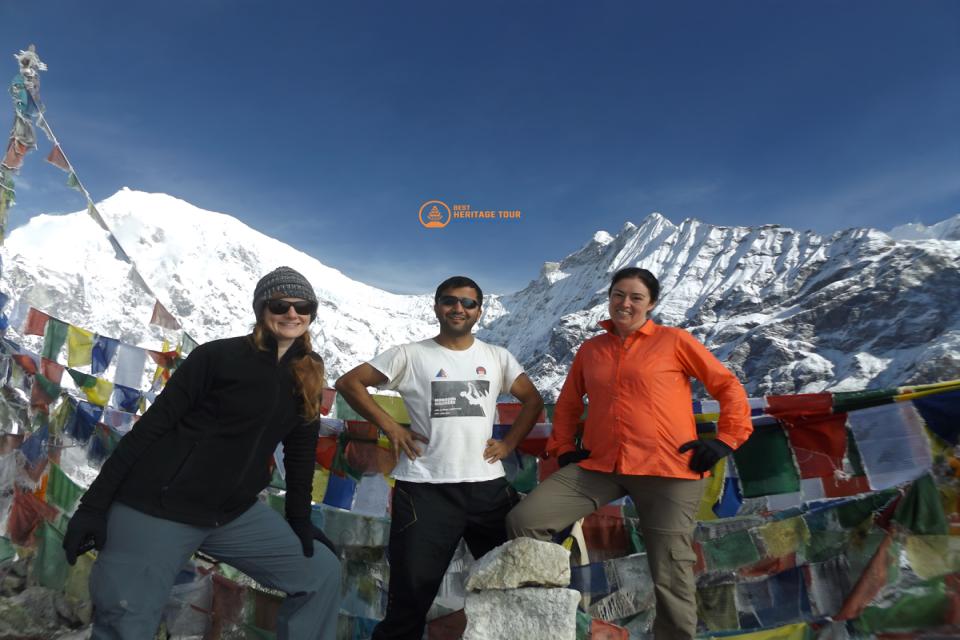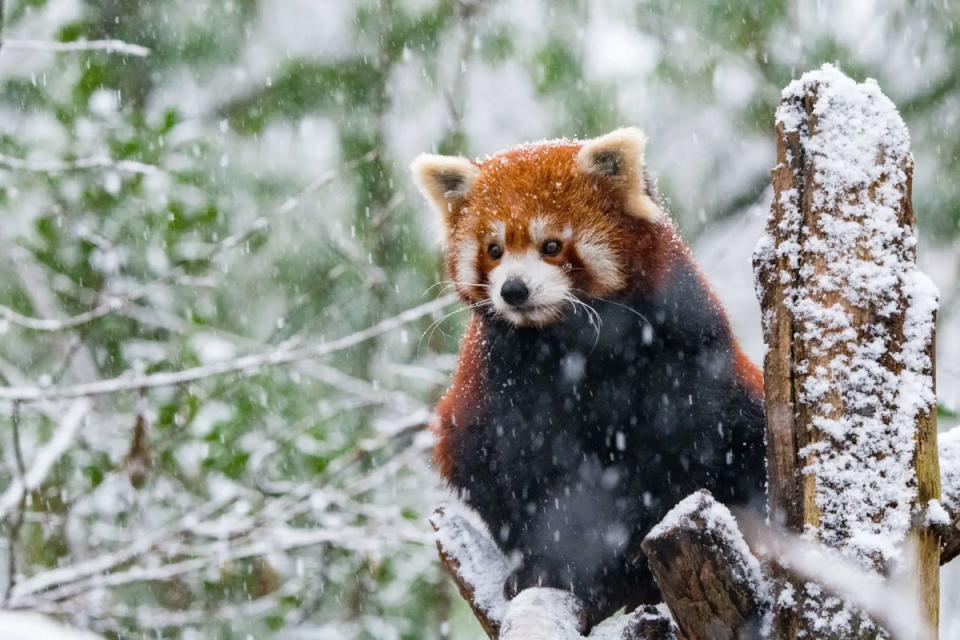Nestled in the Himalayan foothills just north of Kathmandu, Langtang National Park is Nepal’s first Himalayan national park, established in 1976 to protect the region’s unique biodiversity and cultural heritage. Covering an expansive area of approximately 1,710 square kilometers, the park stretches from the lower hills to alpine zones, encompassing lush forests, snow-capped peaks, glaciers, and pristine rivers.
Langtang is famous for being the natural habitat of the elusive Red Panda, one of the rarest mammals in the world, and a sanctuary for many other endangered species. Besides its rich wildlife, the park is renowned for its vibrant Tamang culture, offering a unique blend of nature and tradition.
The park attracts wildlife photographers, trekkers, and nature lovers eager to explore its diverse landscapes and experience the warm hospitality of the local communities. From the spiritual retreat of Kyanjin Gompa to the stunning summits of Kyanjin Ri and Tserko Ri, Langtang National Park promises an adventure filled with natural beauty and cultural richness.
In this guide, we’ll take you through everything you need to know about exploring Langtang National Park - from its fascinating history and incredible wildlife, including the rare Red Panda, to the vibrant Tamang culture that thrives in the region. Whether you’re a wildlife photographer, trekker, or nature lover, this guide will help you plan an unforgettable journey filled with awe-inspiring landscapes, rich traditions, and unique wildlife encounters.
Things to Do in Langtang National Park
1. The Wildlife of Langtang: The Elusive Red Panda and More
One of the biggest draws of Langtang National Park is its incredible wildlife diversity. Among all the animals here, the star attraction is undoubtedly the rare and elusive Red Panda. This small, tree-dwelling mammal is a master of camouflage, making it a thrilling sight for wildlife photographers and nature lovers who venture deep into the forested slopes.
But Langtang’s wildlife doesn’t stop there. The park is also home to Himalayan black bears, musk deer, Himalayan tahrs, and a wide variety of bird species - over 300 species have been recorded here! Bird watchers will delight in spotting colorful pheasants, eagles, and migratory birds, especially during the spring and autumn seasons.
Thanks to the park’s diverse habitats-from subtropical forests to alpine meadows - visitors can experience a rich tapestry of wildlife on a single trek. With patience and a bit of luck, Langtang offers unforgettable encounters with Nepal’s natural treasures.
2. Discovering Tamang Culture in Langtang
Langtang National Park isn’t just a haven for wildlife; it’s also a vibrant cultural landscape, deeply rooted in the traditions of the Tamang people. This indigenous community has lived in the region for centuries, preserving unique customs, languages, and Buddhist practices that add a rich cultural dimension to your trek.
As you pass through traditional Tamang villages, you’ll notice their distinct stone houses, colorful prayer flags fluttering in the wind, and the melodic chanting from local monasteries. The Tamang people are known for their warm hospitality, and many travelers find that their interactions with locals are some of the most memorable parts of the journey.
Participating in local festivals or simply sharing a meal with a Tamang family offers an authentic glimpse into their way of life - one that is deeply connected to the mountains and nature around them.
3. Kyanjin Gompa: Spiritual Heart of Langtang
Perched at about 3,870 meters, Kyanjin Gompa is the spiritual and cultural center of the Langtang region. This small but significant Buddhist monastery is a peaceful retreat where visitors can experience the deep-rooted spiritual traditions of the Tamang people.
Inside the gompa, you’ll find beautiful ancient murals, statues, and prayer wheels, all reflecting centuries of Buddhist heritage. It’s also a hub for trekkers, serving as the base camp for exciting ascents to nearby peaks like Kyanjin Ri and Tserko Ri.
Visiting Kyanjin Gompa offers a moment of calm and reflection amid the rugged mountain landscapes - a chance to connect with the peaceful spirit of the Himalayas while immersing yourself in local culture.
4. Trekking to Kyanjin Ri and Tserko Ri - Majestic Himalayan Views
For trekkers seeking breathtaking Himalayan panoramas, the climbs to Kyanjin Ri (4,773 meters) and Tserko Ri (4,984 meters) are absolute highlights of any Langtang National Park adventure. Both peaks offer spectacular views of the Langtang range, including towering summits like Langtang Lirung and Ganesh Himal.
The trek to Kyanjin Ri is moderately challenging but rewarding, taking you through rocky trails and alpine meadows. From the summit, you’ll be treated to sweeping vistas of snow-capped peaks and the valleys below - perfect for photography and simply soaking in the natural grandeur.
Tserko Ri, slightly higher and more demanding, requires a bit more effort but rewards hikers with an even wider panorama, stretching across Nepal’s Himalayan skyline. The sunrise and sunset from these peaks are unforgettable experiences, offering some of the best views in Langtang National Park.
Whether you’re an experienced trekker or an avid nature lover, ascending these peaks is a must-do for the ultimate Langtang experience.
5. Visit Gosaikunda Lake - A Sacred Jewel in the Himalayas
Nestled at an altitude of around 4,380 meters, Gosaikunda Lake is one of the most iconic high-altitude lakes within Langtang National Park. Surrounded by snow-capped peaks and infused with deep spiritual significance, Gosaikunda is revered by both Hindus and Buddhists as a sacred pilgrimage site.
According to legend, Lord Shiva created the lake by thrusting his trident into the mountain to cool his burning throat after swallowing poison. Every year, thousands of pilgrims visit the lake, especially during Janai Purnima, a full moon festival in August.
The trek to Gosaikunda offers a dramatic change in landscape - from lush forests and rhododendron-filled hills to rugged alpine terrain. As you ascend, the scenery becomes more serene, culminating in the still, turquoise waters of the lake, often mirrored by the skies above.
Besides its spiritual allure, Gosaikunda is a favorite among trekkers for its raw beauty and peaceful ambiance. It can be reached by adding a few days to the classic Langtang Valley Trek or combined with the Helambu Circuit for a more extensive journey.
Why visit Gosaikunda?
-
A stunning high-altitude alpine lake
-
Rich in mythology and cultural importance
-
Peaceful trails with spectacular Himalayan views
Best Time to Visit Langtang National Park
Planning the right season for your journey into Langtang National Park is key to making the most of your trekking and wildlife adventure. Nestled in the central Himalayas, Langtang’s climate varies with elevation, making some months far more favorable for travel than others.
Spring (March to May): The Most Colorful Season
Spring is one of the most popular and beautiful times to visit Langtang. As the snow begins to melt, the trails come alive with blooming rhododendrons, wildflowers, and lush greenery. The skies are generally clear, offering stunning views of peaks like Langtang Lirung, Dorje Lakpa, and Ganesh Himal. Temperatures are mild and comfortable for trekking, especially in the lower and mid-altitude regions.
If you’re a nature photographer or wildlife lover, this is also a great season to spot endangered species like the Red Panda as they become more active after winter.
Ideal for: Trekking, bird watching, photography, and spotting wildlife
Autumn (September to November): Crisp Skies and Clear Views
Autumn is another prime season to explore Langtang. After the monsoon rains, the air is fresh and the landscapes are lush and vibrant. The skies are crystal clear, providing some of the best mountain views you’ll find all year. This is also the peak season for trekking in Nepal, so trails can be more active with fellow hikers from around the world.
Cultural lovers will appreciate the chance to witness major local festivals such as Dashain and Tihar, which bring vibrant celebrations to the Tamang villages throughout the park.
Ideal for: Scenic photography, cultural exploration, high-altitude trekking
Winter (December to February): Quiet Trails and Snowy Peaks
If you're seeking solitude and snowy landscapes, winter could be appealing - but it’s not for the faint-hearted. Temperatures can drop well below freezing at night, and high passes or peaks like Kyanjin Ri and Tserko Ri may be inaccessible due to snow. However, the trails are quieter, and lower elevations remain trek-friendly with proper gear.
Ideal for: Experienced trekkers, peaceful landscapes, snow photography
Caution: Risk of cold-related challenges and limited lodge availability at higher elevations
Monsoon (June to August): Lush but Risky
Monsoon season brings heavy rain to Langtang, particularly in the lower valleys. The trails can become muddy, and landslides or leeches may pose challenges. While the forest becomes incredibly lush and vibrant, mountain views are often obscured by clouds.
However, if you're interested in unique flora or want to avoid crowds entirely, this off-season may appeal - provided you're prepared for wet conditions.
Ideal for: Botanical studies, off-season travel
Caution: Slippery trails, limited visibility, and potential travel delays
Summary: When Should You Go?
|
Season |
Highlights |
Drawbacks |
|---|---|---|
|
Spring |
Wildflowers, wildlife, mild weather |
Some melting snow at higher altitudes |
|
Autumn |
Clear skies, cultural festivals, crisp air |
More crowded on popular trails |
|
Winter |
Peaceful, snowy scenery |
Cold temperatures, limited access |
|
Monsoon |
Green landscapes, fewer trekkers |
Rain, landslides, cloudy skies |
For most visitors, spring and autumn are the best times to visit Langtang National Park - offering the perfect balance of scenery, culture, and trekking conditions.
What to Pack for Langtang Trekking
Packing smart can make or break your experience in the Himalayas. For a comfortable and safe trek in Langtang National Park, make sure to include:
-
Layered clothing for cold mornings and warmer daytime hikes
-
Sturdy trekking boots to handle rocky trails
-
Rain jacket or poncho, especially in pre- and post-monsoon months
-
Sunscreen, lip balm, and sunglasses for sun protection at altitude
-
Insect repellent for the lower forested areas
-
Water bottles and purification tablets or filters
-
Camera gear for capturing the rare Red Panda or stunning Himalayan peaks
Being well-prepared ensures you enjoy every moment on the trail without discomfort or surprises.
For a detailed Packing List for Langtang Trekking, Check out the Packing list provided by Best Heritage Tour.
Practical Tips for Visiting Langtang National Park
Planning a trip to Langtang National Park? Here are some handy tips to make your adventure smooth and enjoyable:
-
Permits: Make sure to obtain the Langtang National Park permit and the TIMS card, which are required for trekking inside the park.
-
Altitude Awareness: Some trekking routes reach elevations above 4,000 meters. Take time to acclimatize to avoid altitude sickness.
-
Local Guides: Hiring a local guide enhances your experience with valuable knowledge of the wildlife, culture, and trails.
-
Respect Nature and Culture: Follow the Leave No Trace principles, respect local customs, and avoid disturbing wildlife.
With these tips, you’ll be ready to explore Langtang safely and responsibly while enjoying all it has to offer.
Conclusion: Discover the Untouched Beauty of Langtang National Park
Langtang National Park is more than just a trekking destination - it’s a living mosaic of untouched Himalayan wilderness, endangered wildlife, and rich cultural heritage. From the thrill of spotting a Red Panda in the forest to experiencing warm Tamang hospitality, and from the spiritual calm of Kyanjin Gompa to the panoramic views atop Tserko Ri, every step in Langtang offers something extraordinary.
Whether you're a nature lover, wildlife photographer, cultural explorer, or trekking enthusiast, Langtang promises a rewarding journey off the beaten path.
Plan Your Langtang Adventure with Confidence
For a hassle-free, enriching experience in Langtang National Park, book your journey with Best Heritage Tour - your trusted local expert in Nepal.
Contact: +977-9851149197
Email: info@bestheritagetour.com
Website: www.bestheritagetour.com
Office Location: Thamel Marg, Kathmandu Nepal
Let us help you explore the home of the Red Panda, Tamang culture, and Himalayan beauty - the Langtang way.
Author: Best Heritage Tour
Date: 25th June, 2025

